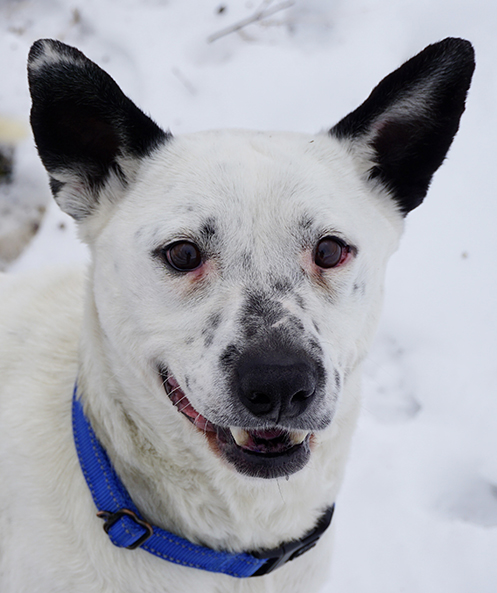
15 Mar Second Chance: Happy Tails!
Second Chance Humane Society’s Animal Resource Center (SCHS) and Thrift Shops have been serving San Miguel, Ouray & Montrose Counties since 1994. The shelter is open to the public Tuesday through Saturday 11 to 5:30. Community veterinary services are available by appointment.
View shelter pets and services online: www.adoptmountainpets.org.
Go here for more on Dr. Shari DePauw of Second Chance. Second Chance veterinary clinic is open Tuesday, Wednesday, and Friday. Call (970) 626-9713 or email clinic@adoptmountainpets.org
Go here for more options from Second Chance.

If you just read the title of this pet column, you’re probably expecting stories of our furry friends finding happy homes. We love those stories. However, today we’re talking about actual tails on dogs. We have had a couple of dogs at the shelter who actually injure themselves by excessively wagging their tails and getting “Happy Tail Syndrome.”
Happy Tail Syndrome is a condition which, when it occurs, causes damage to the tip of a dog’s tails from striking surfaces. It occurs when joyful, exuberant dogs wag ferociously and traumatize the tip of their tail when it bangs on walls, fences, doorways, furniture – or even people. Once there’s damage to the tail skin, the wound opens more every time they bang it. And it bleeds. A lot. It may form a clot, or a scab, while the dog is resting, but as soon as the dog is up and wagging—and hits something—the scab comes off, the wound opens up and bleeds again.
Caregivers usually notice a few drops of blood, then search the dog for a wound. It’s also possible to notice hair loss and a cracked tail tip before it starts to bleed. Happy Tail becomes painful for the dog and often frustrating to treat, repair, and manage the condition.
Treatment starts by finding a way to protect the tail tip from repeated trauma. Applying a bandage or other protection on the tail to stop the bleeding and provide padding to the tail tip is the goal. However, it’s not easy to keep a bandage on these crazy wagging tails, and dogs aren’t always willing to leave them in place (We’re looking at you, Dolly).
In addition to a bandage or protection, your vet will most likely prescribe a combination of pain medication, anti-inflammatories, and antibiotics. Some may recommend adding Omega 3 fatty acids or applying topical vitamin A or E oil to prevent cracking.
One would think dogs stop banging their tails once it starts to hurt, however, dogs use their tail as a part of their body language to convey emotions to other animals and people. When they’re happy, they wag. If bandages and treatment don’t work, dogs may require surgical amputation to shorten the length of the tail so that they cannot swing it with enough force to cause trauma.

Dolly

My name is Dolly (Dolly Parton if we’re being formal). I’m an adorable cattle dog mix who used to be at the shelter on the Ute Reservation. I came to Second Chance where they spayed, vaccinated, microchipped, and fell in love with me. I love people, but I’m a bit picky about my dog friends. I visited the Cat Castle and did really well with the felines (except the one that swatted me on the nose. I don’t like him). I do have Happy Tail, which the nice people at Second Chance are treating and helping me heal.
AND… To continue the Second Chance Highlights section, we want to share the following:
Second Chance is starting a construction project in the Cat Castle. To minimize the stress on the cats, we’d like to place as many as possible in loving homes before the noise and dust starts.
We’re offering NO-FEE Cat Adoptions through April 1.
Of course, we will accept donations.
Support the Snip Fundraiser
Deadline Extended to 3/17
We need a bit more time to meet our goal of spaying/neutering 1000 cats and dogs.
Please donate online, through the Second Chance website, drop a check at the shelter or thrift shops, or mail a check, whatever works best for you!


Sorry, the comment form is closed at this time.